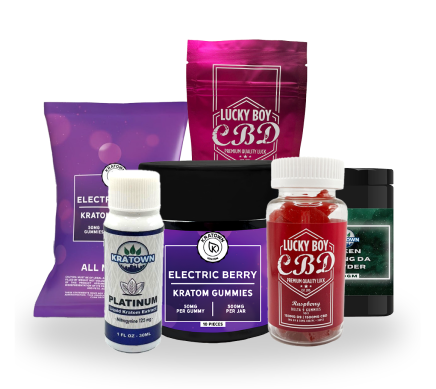
Can Kratom Really Help with Opioid Withdrawal?
When it comes to opioid withdrawal, quitting isn’t just hard—it’s like trying to wrestle a bear while running a marathon in a thunderstorm.
Millions of people are stuck in the brutal cycle, desperately searching for a way out that doesn’t feel like jumping right into the deep end. As the opioid crisis continues to grip communities worldwide, the need for safer, more supportive off-ramps from addiction has never been greater.
Enter kratom: a tropical tree leaf stirring up hope and headlines. Some call it a double-edged sword, while others see it as a lifeline. Once tucked away in the forests of Southeast Asia, kratom for sale is becoming popular.
Let’s look at what makes kratom promising, where caution is crucial, and how to navigate this botanical option with your eyes wide open. Recovery is not just about finding a tool, but also knowing how to use it wisely.
Understanding Opioid Withdrawal
If kicking opioids were easy, we wouldn’t be in the middle of a global crisis. Withdrawal doesn’t knock politely. No, it barges in with anxiety, muscle pain, nausea, chills, insomnia, and a general sense that your body and brain have declared mutiny.
Traditional treatments like methadone and buprenorphine have helped many, but they’re not a perfect fit for everyone. Access can be limited, costs can be high, and the idea of using another opioid—even in a clinical setting—can feel like swapping one leash for another.
That’s where natural alternatives are stepping into the conversation. Kratom, in particular, is catching attention as a potential ally during withdrawal. It’s not a magic cure, but it’s a plant worth watching for some. In the battle against opioid dependence, every viable option deserves a closer look.
How Kratom Interacts with the Body
How does a humble leaf from a tropical tree end up in the same conversation as prescription opioids? The secret lies in kratom’s chemistry—specifically, two powerhouse alkaloids: mitragynine and 7-hydroxymitragynine. These compounds fit into the same receptors that opioid drugs use in the brain.
Unlike traditional opioids, kratom doesn’t come with the same aggressive blueprint. Its structure is different, and its effects, though similar, are generally milder. Think of it as the difference between a firm handshake and a full-body tackle.
That’s what makes kratom so intriguing. It can mimic some of the pain-relieving and mood-lifting properties of opioids, but without the extreme euphoria or the dangerously suppressed breathing that makes opioids so lethal in high doses. It’s not harmless, but it’s not a copy-paste version of prescription drugs either. In many ways, it plays by its own botanical rules.
Potential Benefits of Kratom for Withdrawal Management
When you're clawing your way out of opioid dependence, every bit of relief can feel like a life raft in a storm. That’s where kratom may come into play—not as a miracle cure, but as a helping hand for those struggling with withdrawal.
Some users report that kratom helps take the edge off cravings, giving them just enough breathing room to step away from stronger substances. Others say it’s helped soothe the greatest hits of withdrawal misery: muscle aches, sleepless nights, jittery nerves, and the kind of anxiety that makes you want to crawl out of your skin.
Science hasn’t stamped full approval yet, but plenty of personal stories suggest that kratom might hold real promise. It's not a guaranteed fix, but for many in recovery, it's a plant that whispers of hope when other methods haven’t worked.
Cautions, Risks, and Responsible Use
Like any substance that acts on the brain, kratom brings real risks with it, especially when it’s misused. While it’s been a source of relief for some, others have found themselves trading one struggle for another, facing issues like dependence, unpleasant side effects, or dangerous interactions when mixed with other substances.
That’s why walking the kratom path requires more than good intentions. It calls for moderation, smart dosing, and making sure your supply isn’t coming from a sketchy back-alley vendor with a missing ingredient list and toddler-doodled logo.
Most importantly? Talk to a healthcare provider before giving kratom a try, especially if you're using it during opioid withdrawal. What seems like a natural solution still needs a professional eye. After all, even a leaf can turn toxic if you’re not careful where you step.
Tips for Exploring Kratom as a Support Tool
If you’re thinking about adding kratom to your recovery toolkit, the key is to treat it like a power tool, not a magic potion. It’s helpful in the right hands but risky if you skip the safety manual. If you use it thoughtfully, kratom can offer real support. Here’s how to explore it wisely:
Start Low
Everyone’s body responds differently to kratom. Order kratom capsules, and begin with the smallest effective dose and give your body time to adjust. More isn’t always better—taking too much too soon can backfire with unwanted side effects.
Look at the Big Picture
Kratom isn’t meant to do all the heavy lifting alone. Pair it with healthy habits—balanced nutrition, physical activity, quality sleep, and therapy or support groups. It works best with just one tool in a well-rounded recovery plan.
Track How You Feel
Keep a journal or log to monitor your symptoms, mood, and dosing. Be aware of patterns to make smart adjustments and spot any red flags early.
A Step in the Right Direction
Kratom is not a cure, and it’s not a solution for everyone, but it might be a stepping stone. It holds potential to ease the rough edges of opioid withdrawal, offering relief from symptoms that can otherwise feel unbearable.
If you’re considering kratom, do it with your eyes open and your research hat firmly on. Education, caution, and focusing on mental, physical, and emotional wellness help you navigate recovery with strength and safety.
So take the next step wisely. Seek trustworthy sources, choose quality over convenience, and loop in a healthcare professional. Recovery is hard enough without going it alone. With support and informed choices, you can move forward, one well-considered step at a time.

